#a beatle never said that
Text
A BEATLE DIDN’T SAY THAT! Lewisohn’s lab-created quotes
“One of the things about this book that is a strength is it’s not me saying anything, it’s them or other people. I shape the text, I plot where it goes, I weave it, but the quotes are theirs. And so when I’ve got Paul McCartney behaving in a way some readers might think, ‘Whatever, oh dear,’ it’s actually him saying it. So you end up thinking that to his own credit he said that. It’s not me saying it.” (Mark Lewisohn, ‘Noted,’ (October 7, 2013) Somerset, Guy.)

This is hella long, and that's because it's actually a full blog post. (In case you want it in a less monstrous form.)
A lot of people for a long time have put a lot of trust in Mark Lewisohn’s footnotes. Or at least in the fact of those footnotes. Because once you dig through them for any length of time you quickly discover that Mark Lewisohn’s footnotes hold secrets that would get him expelled from any undergraduate program. They reveal a “history” often contrived through a mass of Frankenquotes, ala carte creations, Lewisohn rephrased ‘paraphrases,’ and worse. For some parts of the narrative things aren’t too bad, yet in others monsters lurk around every corner. But this is not the sort of thing that’s graded on a curve, and it is past time to have a conversation about what standards should be accepted in Beatles’ scholarship.
Lewisohn lists his sources unlike most others. And his footnotes alone are more insightful than some other writers’ books. (Reddit, r/beatles)
I do not judge footnotes based on their insightfulness, nor do I want to single out a redditor, but I grabbed the comment because it’s an opinion that is widely shared and even accepted as canon. At least by people who have not combed those freakish footnotes. And while the pages of piled up sources do look fearsome en masse, a closer inspection reveals an offense to the truth, a threat to the record, and a blight on Beatles’ historiography.
“The rules for writing history are obvious. Who does not perceive that its chief law is never to dare say anything false, and never dare withhold anything true? The slightest suspicion of hatred or favor must be avoided. That such should be the foundations is known to all; the materials with which the building will be raised consist of facts and words.” –Cicero
A Look at Lewisohn’s Lab-created Frankenquotes
FIRST, WHAT ARE QUOTES? AND WHY ARE QUOTES?
Quotes are the soul and center of recorded—and recording— history.
And the rules around quotes and quotation marks are pretty simple. Most people, even if they’ve never written anything beyond a term paper, understand what quotation marks represent.
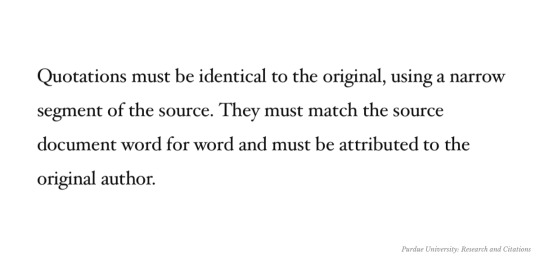
A set of quotation marks means, “This person said or wrote ‘these exact words’ at some given time.” You can smash a quote from two hours before or two years before right up against a separate quote to make your point—although it might get your grade lowered—but what you cannot do is take two different statements from two different times and make them seem like they are one statement.
When you put words inside one set of quotation marks you are stating, in black and white, that the identified person made this statement. That they said all those words together—or if you want to excise a reasonable part and use ellipses to represent that— as part of the same statement.
Look, combining two separate quotes that are not part of the same thought or topic is not a subjective issue. It is not an issue of controversy. Quotes are the bone marrow of written history. Quotes are the alpha and omega. In academic work or journalism they have to be, which makes sense as soon as you think about it. If it was cool for me to take a transcript and grab half a sentence from page 2 and half a sentence from page 17, push them together as if those words were spoken one after the other in a single thought, I bet I can manage to get those words to say almost anything I want.
Separate thoughts must be in two separate quotation marks. Separate. Somewhere between four sentences and a paragraph is widely accepted as the “two separate quotes” line, and there can be some ethical and technical wiggle room in a long rant by a person, but what makes all that subjective nonsense go out the window is if the quotes come from two separate questions. Or two separate days. That’s two quotes. Not hard.

Which again, makes sense if the point is conveying information to the reader and lessening the chance of a writer manipulating someone else’s words to express something that the person didn’t mean.
This is the contract inherent in a quote. These are the rules we all agree to and understand, and these are the reasons why. And there’s no reason to break them.
Why do you want me to believe that John said these two things at one time? What was wrong with what he did say?
THE FOUR MOST COMMON WAYS MARK LEWISOHN MAULS THE MEANING OF THE QUOTE:
The Basic Lewisohn Frankenquote 🧟♂️
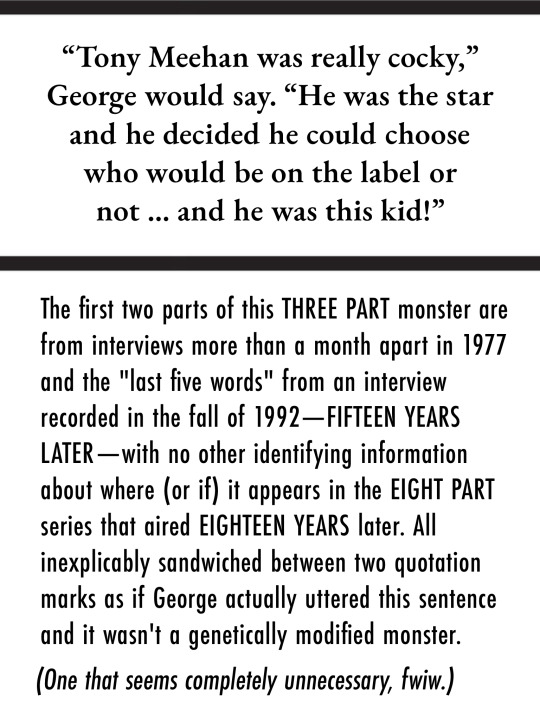
(“CONCLUDING FIVE WORDS FROM—” – I cannot even see the point of this THREE PART monster. Full footnote reads: 9) Author interview with Tony Meehan, September 6, 1995. (“I met George again in 1968 and for some reason he was harboring a grudge against me. He was very, very uptight about it—’You blocked us getting a recording contract …’ ”) First part of George quote from interview by Terry David Mulligan, The Great Canadian Gold Rush, CBC radio, May 30 and June 6, 1977; concluding five words from interview for The Beatles Anthology)
This three-headed monster attributed to George Harrison is a very dull little guy. Not particularly venomous. Just convenient, I guess. For whatever reason, Mark Lewisohn decided it was worth rummaging through the quote buffet until he collected enough pieces for George Harrison to say this thing. “…concluding five words from…” What are we even doing here? No, really. Please tell me.
And like a lot of the footnotes for these bespoke quotations, there are further problems. “[F]rom interview for Beatles Anthology”? An interview that aired? In one of the episodes? Can you narrow it down? I guess I’ll just have to listen very closely to them all and hope I don’t miss the five words.
But if we got bogged down in the sorts of trivial details that would immediately lose a college student a letter grade off a History 101 paper we would never get anywhere. We have to stick to the violent felonies.
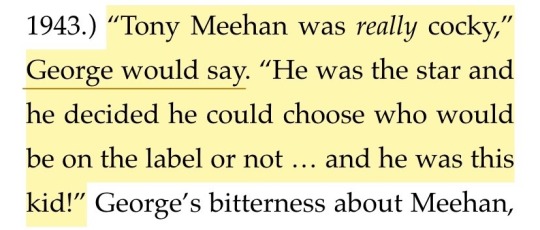
*Love the "George would say——" Uh, would he? Well, I guess after all that trouble you went to, he would now. It's really incredible how cavalier Lewisohn is about a Beatle's words.
These sorts of reconstituted, lab-engineered, made up “quotes” are shot throughout Tune In. “Quotes” made up of words from two, three, and even four sources, spoken months or often years apart.
Ala Carte Creations 🍱
It really is a buffet, and these ala carte creations come in all shapes and sizes. They might just be words that have been plucked up and glued back together to make something more useful to a particular narrative. (Ellipses or dash optional.)

TUNE IN: “John saw a bigger picture, and it would be surprising if it wasn’t equally obvious, or made obvious, to Brian and George. He likened Paul’s enduring snag with Brian to his other long-standing difficulty: ‘[Brian] and Paul didn’t get along—it was a bit like [Stuart and Paul] between the two of them.’” (Footnote 37: Interview by Peter McCabe and Robert D. Schonfeld, September 1971)
Bonus 🍒 Phoebe's dramatic reading of John's original quote:
The Donut 🍩
Then there are a seemingly uncountable number of “quotes” with a sentence or three ripped out from the middle, but with zero representation that more words were ever there. (And in most of these particular deceptions, the simple representation of something excised (. . .) would make the quote fine. There are a lot of these, but they are also the easiest to fix.)

Chapter 10: “I was in a sort of blind rage for two years. [I was e]ither drunk or fighting. **It had been the same with other girlfriends I’d had.** There was something the matter with me.”
And then there are the true buffet bonanzas, words lifted and twisted beyond recognition until they say something brand spanking new.
However, John remembered Paul’s attitude to Brian being very different. John was always emphatic that Paul didn’t want Brian as the Beatles’ manager and presented obstacles to destabilize him, to make his job difficult … like turning up late for meetings. “Three of us chose Epstein. Paul used to sulk and God knows what … [Paul] wasn’t that keen [on Brian]—he’s more conservative, the way he approaches things. He even says that: it’s nothing he denies.”
The Lewisohn Remixes 🍸
And then there are the “paraphrases.” I couldn’t even begin to guess how many of these there are, and often they aren’t even paraphrases, but whole new Mark Lewisohn re-interpretations with quotation marks slapped around them. But if you don’t check, you probably won’t know, because like this Lewisohn rewrite of a well-known Mrs. Harrison quote, there’s a good chance you’ll recognize the bulk of it, making it less likely that you’ll catch the scalpel work excising Paul. And while I don’t want to get caught in the nooks and crannies of intent in an example like this one I have to say, just this once, that what has to be a purposeful excising of Paul to create a slightly new quote on one side, combined with a badly acted, bad faith—(or bad scholar)—“Where was Paul when John’s mom died?” on the other, is par for the course.
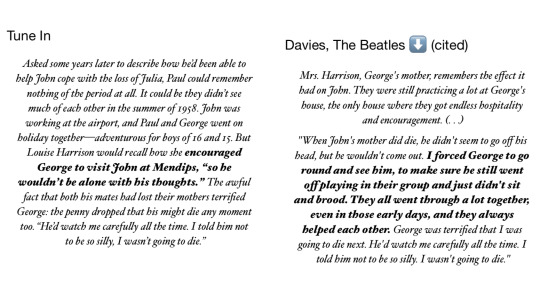
George Harrison’s mom’s made up Lewisohn rephrase which coincidentally removes Paul from the imagery.] ❦ LEWISOHN:“ Asked some years later to describe how he’d been able to help John cope with the loss of Julia, Paul could remember nothing of the period at all. It could be they didn’t see much of each other in the summer of 1958. John was working at the airport, and Paul and George went on holiday together—adventurous for boys of 16 and 15. But Louise Harrison would recall how she encouraged George to visit John at Mendips, “so he wouldn’t be alone with his thoughts.” ❦ DAVIES: “They were still practicing a lot at George’s house, the only house where they got endless hospitality and encouragement. . . . I forced George to go round and see him, to make sure he still went off playing in their group and just didn’t sit and brood. They all went through a lot together, even in those early days, and they always helped each other.”
Why do you have to slice and dice and reconstitute people’s words? No writer, and certainly no historian, should ever feel empowered to take words from a historical figure from two or three different places and topics and times, splice them together, and tell us, “Winston Churchill said this.” No he didn’t! Why are you so intent on changing the words of the people you’re writing about? What’s wrong with just using two different quotes?
You cannot take two or three quotes from two or three or even four separate statements, stick them between one set of quotation marks and say John or Paul or George or Joe Smith said this.
No they didn’t. They never said that. Why do you want me to think they did??
All these words are Abraham Lincoln’s, but this is not a Lincoln quote:
“Every man is said to have his peculiar ambition. Whether it be true or not, I can say for one that I have no other so great as that of — making a most discreditable exhibition of myself.”
(I kept it ridiculous, although I didn’t have to.)
But I want you, the reader, to be saying to yourself, “Okay, enough already. I get it!” Because in the last few days I have wandered too far into the weeds too many times and written far too many words detailing the multiplicity of ways Mr. Lewisohn does violence to each and every law of reporting historical facts, and could write many more. And I will post a more detailed list of the crimes against the quote that I am charging Mark Lewisohn with as we go forward, but I don’t think we need that now. The fact is that every fair-minded person knows what quotation marks represent, and there is no more fair-minded group of people than serious Beatles fans and scholars. And it is those fair-minded scholars who I want most to hear me. Whether you’ve written books or host a podcast or just know that you know a whole lot of stuff and take seriously your part of the trust in preserving the truth about The Beatles for us and future generations, it is you I am really talking to. My Cicero quoting-freaks. The ones who care about getting it right.
“The chief, the only, aim of style is to put facts in a clear light, with no concealment.”
- Lucian of Samosata
What footnotes can do, and what footnotes can’t.
You can list multiple sources in a single footnote. That’s not only fine, it’s correct. If I want to tell part of a story based on several sources, that often means several sources in a footnote. But not for one, single quote.
The problem isn’t the footnote, it’s the bioengineered quote on the page that you swept under a footnote hoping I wouldn’t notice.
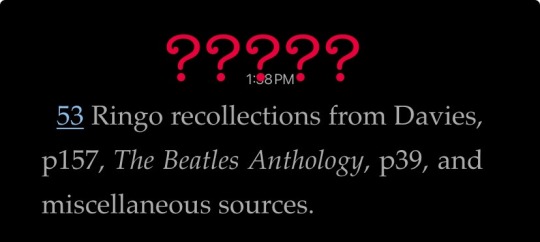
Which leads us to what a footnote is not. A footnote is not a post-hoc fixative for your textual sins. You cannot do whatever you want as long as you confess it in a footnote. A footnote is not a magic spell. A footnote is not the universally understood symbol for “I have my fingers crossed behind my back.” You cannot fix lies and misrepresentations in the footnotes. Footnotes aren’t for trying to chase down three different sources to match up which part of a manufactured “quote” someone said on which date. Footnotes are not the picture on the front of a puzzle box. I should not need to find corner pieces to figure out which of these George Harrison words were actually spoken together.
Footnotes are a truthful and independently verifiable record of primary sources. It’s that simple.
And taking Mark Lewisohn completely out of the picture for a moment, I feel sure we can all agree that neither John Lennon nor Paul McCartney nor George Harrison nor Ritchie Starkey would want anyone rearranging their words as if they were guitar chords. You wouldn’t take three-quarters of Penny Lane and one-quarter of Across the Universe, put them together and call it a Beatles‘ song. So don’t take three quarters of John to Jann Wenner and one-quarter of John to Lisa Robinson, put them together and call it a Beatle’s quote.
MY PERSONAL STANDARD IS THAT IF SOMEONE REPRESENTS, “A BEATLE SAID THIS,” IT BETTER DAMN WELL BE SOMETHING A BEATLE SAID.
None of the Beatles, dead or alive, would be cool with their words being taken out of context at all, let alone two or three different statements on god knows what being combined into one. This isn’t hard, though. Use two or three separate quotation marks, and don’t take statements out of context. Don’t mix and match their words, but don’t twist them, either. If a person said something, it is the historian’s duty to represent those words to the best of your ability, and then use them to tell a factual story focused on what you feel is important. Staying true to the original words and true to their meaning. If you can’t use those words without twisting them, then change your story to fit their words, not the other way around. If their statement helps tell the story your way, use it! For goodness sake, John Lennon said at least two opposing things about almost every topic on earth, so there should be enough to choose from without being deceptive. I actually want the truth. Don’t you?
Biography is story based around accurately represented, trustworthy and verifiable facts. And look, Beatles fans, whoever your favorite is: we are not going to get the truth about his history if we don’t learn to take these things seriously. Let’s have—if not high standards—at least the lowest generally accepted standards. In the mid-term we need a lot more Beatles scholars with a lot more points of view, and now—right now—we need experienced Beatles scholars to prioritize searching out and finding smart, interested people to mentor. And we simply must ensure that we aren’t allowing to solidify into stone “facts” that are not facts and statements no one ever made. I don’t think any honest Beatles fan—(which rounds up to all of them)—wants any question around that issue.
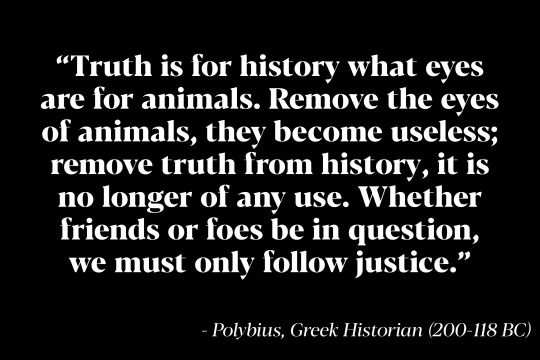
The record is the most important thing. Now, and always. This is not about John versus Paul. John versus Paul may live on always in our hearts, but for Beatles history, it’s the wrong question. I’d rather someone be up front about their loves, but in the end the focus should be on representing the primary facts in their most pristine form. Love who you love most, but place truth above all. Pristine facts. Pristine quotes. Nothing hidden. Nothing misrepresented.
Let the historical actors speak for themselves. That is their right.
And the historian’s duty.
NEXT, WE DISSECT A MONSTER.

Final note: I became frustrated and (maybe strangely) offended by Lewisohn's obscene pretenses in 2020, but my frustrations were nebulous and unfocused until this incredible AKOM series. I feel much better now. Angrier. But better. They worked their asses off. 🥂
#lewisohn#akom#the beatles#tune in#fine tuning#frankenquotes#lewisohn's monsters#historiography#paul mccartney#john lennon#george harrison#ringo starr#mark lewisohn#a beatle never said that#beatles#brian epstein#allen klein#Spotify
161 notes
·
View notes
Text

my tablet is broken
#not based on the beatles lotr unexisted movie#i jokingly said lord ringo too much i started calling him lord of the rings#reverse gandalf and the hobbits#ive never watched lotr seriously i only saw some parts of lotr when i was 5 yo#idk the whole lore and gandalf in my memory was that big fuzzy elder i assumed he the real lord of the rings and magneto reincarnation#also i cant see how would johnny fit this franchise#but bilbo paulie and frodo georgie could work#the beatles#the beatles fanart
34 notes
·
View notes
Text
13 September 1964
A package labeled "Beatles fan mail" is examined before reaching the Beatles in Baltimore, Maryland, and found to contain two girls.
I guess you could call them fan females?
#today in the life#the beatles#i never said there wouldn't be dad jokes#beatlemania#1964#13 September
28 notes
·
View notes
Text
Say whatever you want about the beatles but there's something about them being mentioned in virtually every documentary of musicians who debuted before the 2000's and a handful from above the 2000's that just...
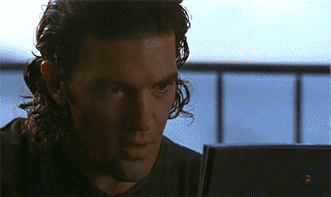
#iconic majestic one of a kind legendary totally unique never before seen#i remember that hole docu where courtney said the prayed that her band could be bigger than god and the beatles#like fuck her but points were made#rambless#also that top 100 from vh1 where they were named n°1 and acts from every genre possible agreed with it....#pure cinema
13 notes
·
View notes
Text
me writing this royai fanfic that is titled/inspired by the song run by taylor swift ft. ed sheeran and making it seem like a happy fun wistful story only to have the latter half be set to yoko by maisie peters

#I MEANT DONT GOOOOOO IT CAME OUT AS GOOD BUR#YOU SAID FINE WHEN YOU SHOULDVE SAID WE COULD TRY#SO NOW WERE SEEING OTHER PEOPLE…..#AND ITS TO LATE TO TELL YOU BUT YOKO NEVER BROKE UP THAT BAND. YOU MISUNDERSTOOD THE BEATLES YOU MISUNDERSTOOD ME TOO#anyway; apologies i’m advance for the angst that i’m writing#the way the series started out as me writing royai fanfics to vault tracks has now moved to me royaifying maisie peters discography#kelly babels#royai#fanfiction
7 notes
·
View notes
Text
“I suppose the story was that [John and I] were pretty close in the beginning when we were writing stuff together. We felt alot of sympathy for each other, although on a personal level, based on a lot of stuff that went down later, I obviously wasn’t that close to him. To me, he was a fella, and you don’t get that close to fellas. I felt very close to him, but from alot of what he said later, obviously, I was missing in the picture. But anyway, I felt very close to him then and when the Beatles started to feel the strain towards the last couple of years, it was getting to be a bit of a strain and we were drifting more apart. I think the kind of anchor that had held us together was still there.”
— Paul McCartney, Music Express, 1982
#my quotes#what a fucking MESS#he literally goes#yes we were close#but I guess based on the beatles breakup we weren’t actually close#well that’s just normal cause we’re fellas#but I actually did feel really close to him#but I guess it was all a lie based on what he said later#but I still felt very close to him#but we broke up#but we were still together#like holy FUCK the back and forth and internal contradiction here is INSANE#it’s almost as bad as that April 1970 rolling stone interview#where he literally says that he and john used to call each other and they never called each other in the same breath#anyways though#sometimes I actually doubt paul and john were that close and I think that paul has just been convincing himself otherwise since 1989ish#but quotes like this actually convince me otherwise#where paul 100% believed they were close but the breakup shattered this belief#and since he never understood why john left#he feels he has to retroactively conclude they weren’t close#but that’s a retroactive assessment#ANYWAY#the best paul interviews are from 1970-1971/1981-1984/1998-2001#cause for some reason when something traumatic happens something switches in his brain and he forgets how to lie#this may be my favorite paul interview btw#paul mccartney#john lennon#the beatles#beatles
139 notes
·
View notes
Text
beat the meatles
#i never ever go on twitter but im enjoying myself looking at people talking abt the beatles biopics#a lot of funny stuff to be said
5 notes
·
View notes
Note
Hi AKOM, I love the podcast! Thank you so much for bringing it us! In the Pizza and Fairytales series, while talking about the blurry boundaries between J & P, you mention a story (I believe from the Cavern days) of John and Paul sleeping with 2 girls in the same bed. I’ve been trying to find where this comes from for months and haven’t found anything. Perhaps it’s in the extended Tune In? I don’t have any that. If you have the time to to take pity on me, would you mind sharing the full quote and where it comes from? I’d be very appreciative. Thank you again!
Hello Listener!
It is indeed from the extended Tune In! Apparently at the last moment the woman involved did not want her name published, so the story was removed from the final version at her request.
But we still have it! I've transcribed it below for you:
"These boys were close... so close they also partnered in an X-rated photographic enterprise at the same time. Their bedroom models weren't their girlfriends but a pair of obliging young ladies who didn’t rush back to a job after Cavern lunchtimes; one of them lived in a top-floor flat in a large house on Prince's Road, close to the Rialto Ballroom- the houses built by George’s paternal grandfather. John and Paul got them to stand topless (or better) in arty Romanesque poses while they operated the camera Paul had just given his brother... and immediately borrowed back. When the sessions were over, events usually followed their natural course. Hamburg experiences had longer erased any vestige of embarrassment so it was no big deal for John and Paul to have sex with their girls in the same room at the same time, and here in the Prince's Road flat, it’s claimed, in the same bed at the same time. "
In sort of hilarious detail, Lewisohn further mentions that Paul visited the studio of a photographer they'd once worked with to get some tips on how to improve his erotic photography.
Apparently John and Paul also once double-teamed these same ladies at a party (or maybe just left the party together to go have sex elsewhere):
"Dot was aware of her boyfriend's infidelities but Cyn maintains she stayed unaware of everything. Others knew it. As Bobby Brown says, "There were lots of girls around The Beatles who offered themselves and it was obvious that they could have it when they wanted it. There were two girls in particular - we all knew who they were and what they were up to. They were once at a party I was at and it went on that night; they disappeared from the room and you knew what was going on.""
So there you go! Thanks for listening.
#AKOM#Thanks Mark for this story#never let it be said you haven't greatly contributed to Beatles history
58 notes
·
View notes
Text
“I almost broke my other hip when I found out what a mclennon was.”
-paul, in 2013, I guess?
1. I can’t find anything about paul breaking his hip the first time.
2. The only source I see for this is “classicrockquotes.”
95% sure this quote is fake. Bring me a source if I’m wrong.
#mclennon#the beatles#john lennon paul mccartney#paul never said this#Paul’s hips are the topper most of the poppermost
21 notes
·
View notes
Text
George Martin and Paul McCartney on Working Together Again in the Eighties
“Paul’s decision to ask George Martin to produce the prospective album was an important decision. George remembered the circumstances: ‘We had always kept in touch, and had just been out together to dinner; and just as they were leaving, Paul said ‘Oh, there’s one thing I forgot to ask you, would you like to produce my next record?’ I said well now you tell me! My immediate joke was--why spoil a beautiful friendship?...Then I said yes, I’d love to work with you again, but will it work?’
The two men had combined their talents on the one-off ‘Live and Let Die’ single in 1973, but this would be their first full collaboration since ‘Abbey Road’ in 1969.
George: ‘I was apprehensive, and so, of course, was he. We’d both been apart for a long time, and weren’t sure how we would react to each other. And I said, well, if it’s really going to work out, you’re going to have to accept some stick from me, and you may not like it, because you’ve been your own boss for so long. Anyway, we started working together again, and he realised that if I was going to be any use to him, I had to be a critic, but a positive critic, not a negative one. Well, we got on fine, and embarked on ‘Tug of War,’ and here we are, three years later, still working on it!’
Paul was equally enthusiastic about the collaboration: ‘It was very good because I hadn’t realised how well we knew each other. When we got back into the swing of it, and were actually recording rather than being nervous, I just remembered...I’d say he has to be one of the best producers in the world, I don’t think there’s much doubt about that.’”
From the Pipes of Peace press kit
#George Martin#Paul McCartney#elsewhere Paul's said that he and the other Beatles were reluctant to work with GM again because of the Beatle association#Interesting that this doesn't come up here and and GM's point about them being nervous about getting back into producer/artist looks like#it's speaking for why Paul was nervous too#but there were some additional things that didn't get mentioned here#I also saw the 'accept some stick from me' quote floating around somewhere before and never knew where it was from. Now I do!#I suspect a lot of the quotes come from the behind the scenes video material that was included in one of Paul's archive releases#but some of these quotes weren't included in that
29 notes
·
View notes
Text
love listening to discographies out of order. i don't care about their artistic journey lol!
#listening to revolver btw. have never heard a single beatles song before. oh well#the album cover looked cool! plus this sixteen year old on twitter said it's their fav album so#post.txt
42 notes
·
View notes
Quote
TVG: What about writing with George Harrison? Would that be a goal?
PM: That’s an interesting idea. George would have to want it. I wouldn’t sort of go around selling the idea to him. But if he ever sort of said, “Hey, I’d like it.” The thing is, we had that opportunity during the Beatles and we never picked it up, so maybe that says something. But if he wanted to write something I certainly would give it a go. It would have to come from George. I wouldn’t want to hawk myself about and have him say, “No, thanks.” I wouldn’t fancy that.
Interview for TV Guide • Saturday, May 5, 2001
#that's so near to public reveal George had cancer it's sad#it's sad anyhow really#i've noticed how often in interviews from the 80s and 90s Paul mentioned that he'd never written with George#and he obviously hinted he wanted it#he also said a similar thing of ''they have to really want it'' about the Beatles getting back together in the 70s#but that's the first time I read him being this kind of insecure/proud to ask George that#I can understand him though considering the things George said about not wanting to work with him#but it's a bit sad that he wanted it but never asked because George had to ask#because who knows maybe George thought the same that Paul had to ask if he wanted it#even if that sounds doubtful#but in life it often happens that both sides wait for the other to take initiative#fearful of rejection#Paul and George
16 notes
·
View notes
Text
She said I know what it’s like to be dead. I said girl wtf.......
4 notes
·
View notes
Text
I’m at home and going through old photo albums to organise them and I came across a cute one where I’m three days old and being held by my dad - only I noticed that on the shelf behind us there is a Let It Be book and I’m being watched over by John and Paul ._. CURSED
14 notes
·
View notes
Text
hi friends i am back from school
#we listened to abbey road today in econ it was so slay#my teacher said his fave beatles song is you never give me your money which is so crazy cause that’s also MY favorite beatles song or#at least up there it changes
2 notes
·
View notes
Text
if you stinkies keep saying that any band that has one (1) mormon OR ex-mormon member is a Mormon Band I’m going to call the beatles an Anglican-Catholic band that spreads Pope and Jesus propaganda. and that enjoying them means you support all wrongdoings of those churches
#if we're being technical one of them said he was basically all religions SO! that means the beatles is a religious band#for All Religions On Earth#i'll never forget the fucking imagine dragons twitter rant okay. i'll never let them live that down#i'm begging you PLEASE check someone's personal beliefs AND their art before saying that art is representative of their organized religion#whether or not you think Mormonism is bad or a cult doesn't fucking matter when applied to some random musician you've never met
2 notes
·
View notes